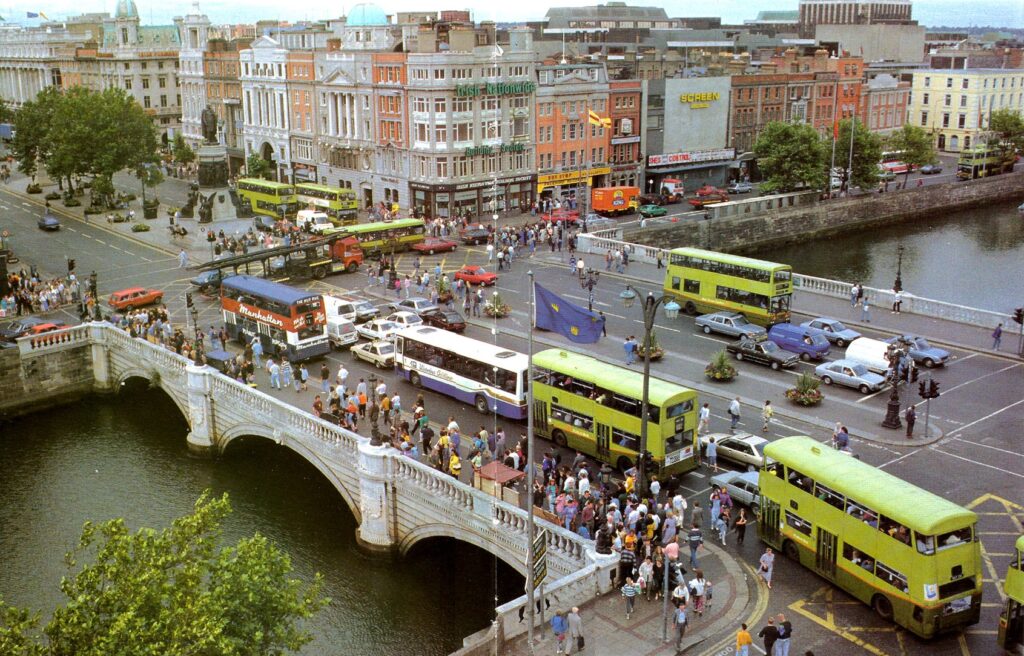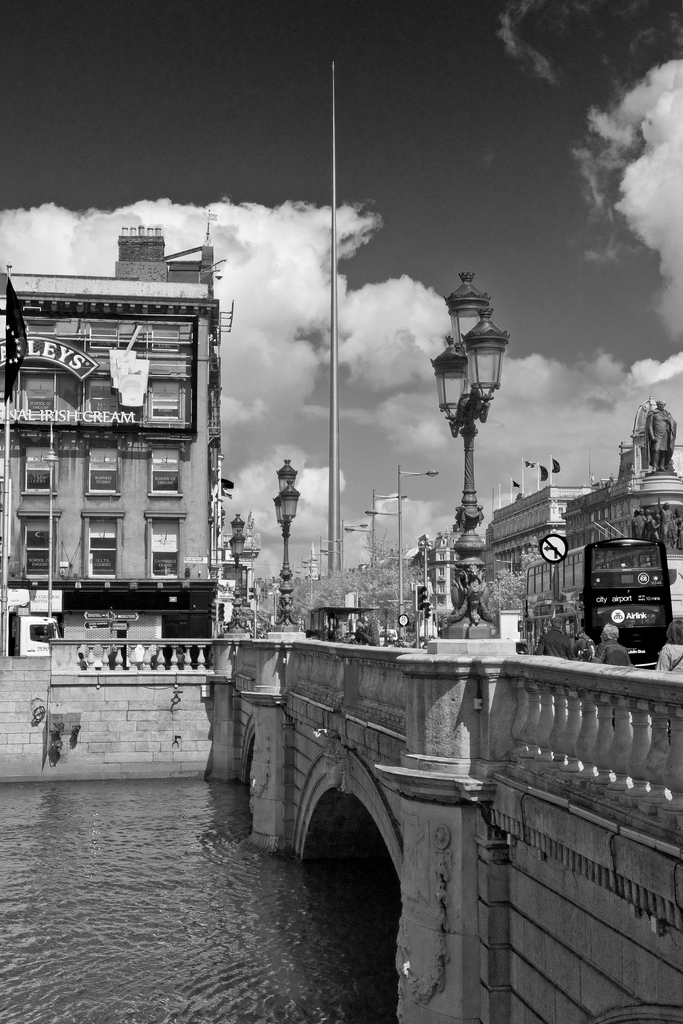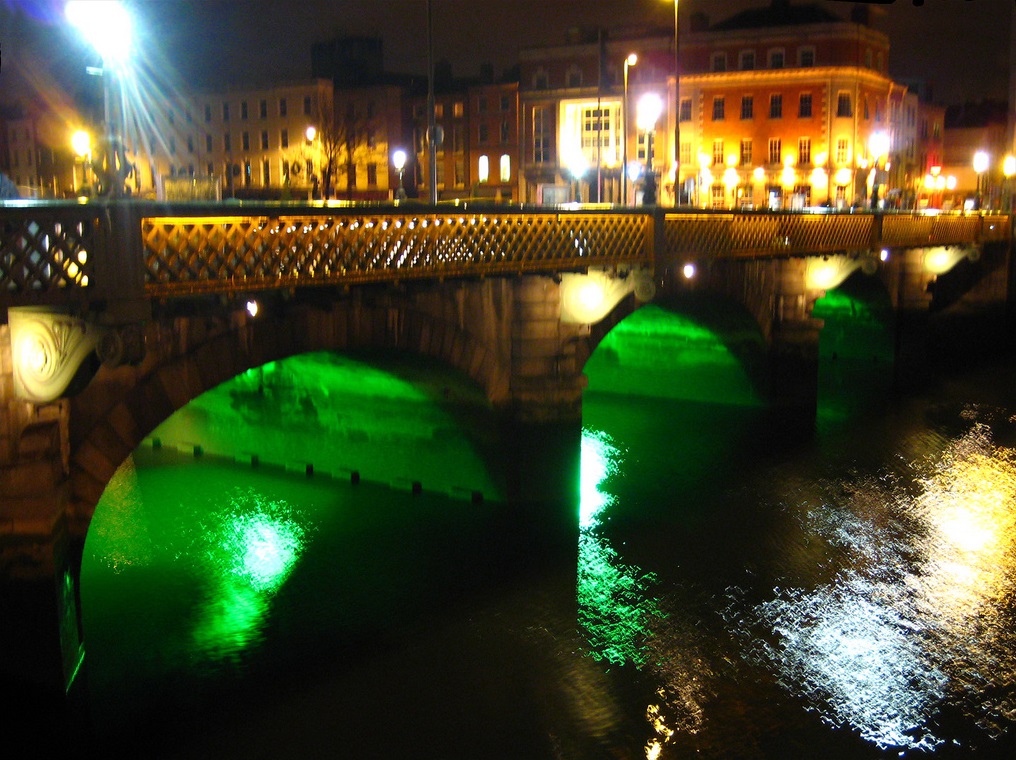O’Connell Bridge is a flat bridge, supported by three arches – or spans – that crosses the River Liffey in central Dublin. It is flanked by O’Connell Street on its north side, from which side the bridge is constantly watched over by the huge, iconic statue of Daniel O’Connell; and Westmoreland Street and D’Olier Street is on its southern side. It was built between 1791 and 1994 and named after the then Lord Lieutenant of Ireland – Frederick Howard, the 5th Earl of Carlisle.

Materials, maintenance and décor
O’Connell Bridge is made of granite, and Portland Stone which was quarried on the Isle of Portland in Dorset. This stone would have been ferried over to Ireland from the UK. Despite the difficult logistics involved in shipping this stone over to Dublin from Dorset, the stone was considered ideal because of its durability and the ease with which it can be carved. Portland stone is a creamy colour, which is very durable and – with professional care – is easy to maintain and repair. As a major gateway between the north and south sides of Dublin, and one of Dublin’s key tourist attractions, O’Connell Bridge is carefully maintained by Dublin City Council. In 2008 extensive work was performed to repair weathering and structural damage to the two main pillars that support the bridge.
On its north and south banks, the bridge blends luxuriously into the walls of Dublin Quays; from a certain distance and from the right angle it is difficult to tell where one ends and the other begins. Similarly, the bridge and the streets that it connects blend into each other so seamlessly such that for the Dubliner passing over the bridge it is just a daily event of no more significance than any other. As a road bridge, it just acts merely as a functional tool unless one looks deeper into the beauty that lies to the sides and below.

Lanterns, lights, engravings, pillars and keystones
The two supporting pillars are embellished with wonderfully intricate carvings. Above each of the pillars are lanterns that light up the bridge to locals and visitors making the crossing between north and south Dublin at night. On each side of these two pillars, and on the quays, each of these three armed lamps are supported by a single steel standard. In all there are 24 lanterns over O’Connell Bridge – each is richly adorned with crowns and other decorations. At night, green lights light up the River Liffey below; golden lights light up the balustrades; and the white colour that splashes out of the lanterns completes the Irish Tricolore effect. Like many of Dublin’s bridges, the O’Connell seems to adapt into the night with the same sense of fun and colour that encompasses the whole of Dublin.

The keystone which rests between the two centre-most arches, is carved into a head that represents the River Liffey. The same carving can also be found on the Four Courts building. This wonderful old bridge has served as the major artery between the two sides of Dublin for over two centuries and has always performed it’s job proudly; whilst also serving Dublin as one of the major attractions visitors to this great city. It has done these jobs for centuries and – god willing – will continue to do so for many years to come, under the watchful gaze of O’Connell.